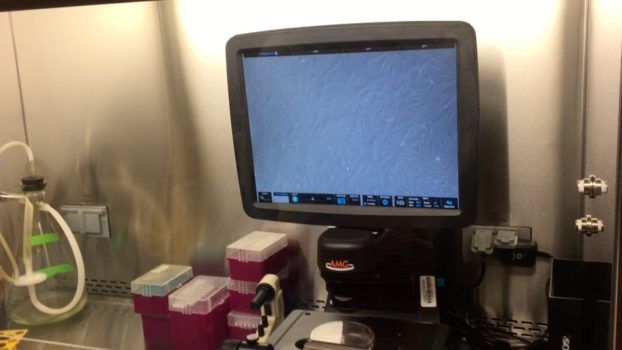Hope in Our Hands: Maintaining Harper’s Living Cells
This is the final post in a series about our visit on Harper’s birthday to a stem cell research laboratory at the University of California at San Diego. The trip was not only to see the reality of Harper in her new form. We chose what would have been her sixth birthday to witness the hope of scientific breakthrough that the contribution of Harper’s blood, brain, and tissue could bring. We came to learn the amount of financial commitment that this hope requires. (Read Post 1 and Post 2 of this series).
"The vision must be followed by the venture. It is not enough to stare up the steps - we must step up the stairs." ~Vance Havner
What exactly is the significance of brain, tissue and blood samples Harper donated for scientific research?
As a deep tissue, postmortem donor, Harper was able to leave a very large sample of the exact tissue scientists needed and had not had access to before for this important area of study. But the BIG question was, would her cells regain life even if received within the required time frame? As we just recently witnessed in our trip to Dr. Alysson Muotri’s laboratory at UCSD (University of California San Diego), Harper’s cells LIVE!
Currently, Dr. Muotri and his team are studying tissue samples using Dr. Shinya Yamanaka’s Nobel Prize winning research, the iPS cell process. One of the significant things about Harper’s donation is that they now have human brain tissue to compare their findings against because Harper’s is the first CDKL5 brain donated to science.
What does something like cell initiation and regeneration cost?
The initiation of cell growth is done in triplicate in case one cell line does not survive. Each cell line costs $10,000. So to take Harper’s cell donation and create three living, growing cell lines cost $30,000.
The cost of feeding one person’s live dish of cells is $300 per week. That is $15,600 per year for Harper to “eat!”
So far just for Harper’s already living cells to stay alive will cost $21,300 per year! This is just keeping her in existence and standing by for the purpose of scientific advancement and does not include any research costs.
Harper now lives in a special home where staff must come on a daily basis to care for and gather data on her proliferating cells. The cost of the science technician is approximately $57,000 per year. One person can attend to a total of 10 cell lines, of which Harper is one. So if Hope4Harper were able to split the cost with nine others it would cost $5,700 per year for Harper’s caretaker.
Who is paying to keep Harper’s cells alive and ready for research?
Currently 30% of funding is coming from private donations. This is people like you who read Harper’s blog, participate in Run4Hope fundraisers, and follow Hope4Harper on Facebook. The remaining 70% of funds to maintain Harper’s cells are coming from grants. Where did the initial cost of cell initiation come from? The International Foundation for CDKL5 Research (www.cdkl5.com).
Here is how to contribute funds directly to Dr. Muotri’s research on CDKL5:
Make a check payable to “UCSD Foundation.” On the memo line put: “F-4748“. (This is the fund number that will make sure the money gets to the right place.)
Mail checks to:
Pam Werner, Sr. Exec Director
UC San Diego
9500 Gilman Drive #0937
La Jolla, CA 92093-0937
This is but one of the many significant involvements of Hope4Harper in 2016. Please consider being a part of this impact by signing up for the 2016 Memorial Run4Hope as a sponsor, Virtual Runner, Participant or Volunteer.
Recent Posts
Hope in Our Hands: Cell Research on Harper’s Birthday (Pt. 2)
Hope in Our Hands: Cell Research on Harper’s Birthday (Pt. 1)
It’s Harper’s Birthday, This Year She Gave the Gift


